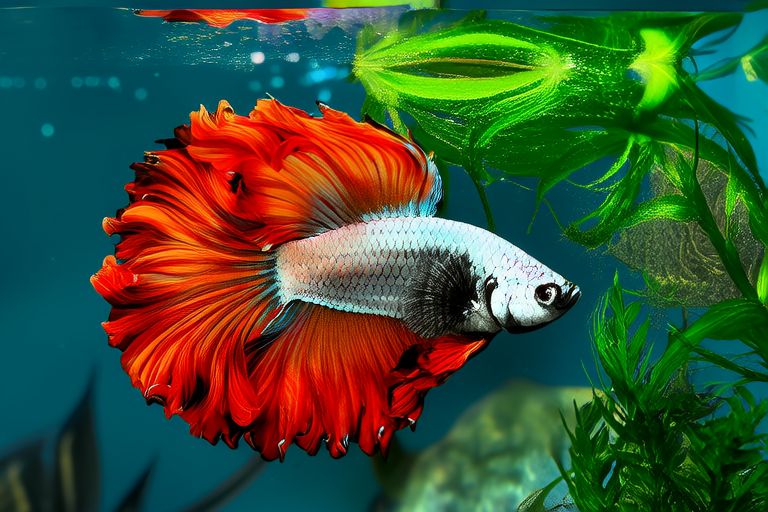The Ultimate Guide to Decorating Your Betta’s Underwater Paradise
Creating an ideal living environment for your betta fish is crucial for their health and happiness. This guide will walk you through the essential aspects of setting up and maintaining a thriving aquatic habitat, including tank size selection, filtration systems, temperature control, water quality maintenance, decoration choices, substrate selection, lighting, and overall arrangement.
Selecting Appropriate Tank Size
A common misconception is that bettas can thrive in small containers. However, providing a spacious environment is vital for their well-being. A minimum tank size of 5 gallons is recommended to ensure adequate space for swimming and proper oxygenation. Larger tanks allow better water circulation, which helps maintain cleaner conditions.
Filtration Systems
Choosing the right filtration system is key to keeping the water clean and free from harmful toxins. Filters help manage waste products, excess food, and uneaten flakes, preventing ammonia spikes that can be deadly for bettas. Look for filters designed specifically for small aquariums or those with adjustable flow rates to avoid overwhelming the delicate fins of your betta.
Temperature Control
Bettas are tropical fish that prefer temperatures between 76°F and 82°F (24°C and 28°C). Maintaining this range is crucial for their comfort and immune function. An aquarium heater with a built-in thermostat ensures stable water temperatures, while regular monitoring with a thermometer helps catch any fluctuations early.
Water Quality Maintenance
Regular partial water changes are necessary to keep the tank environment fresh and healthy. Aim to replace about 20% of the water weekly, using dechlorinated tap water or conditioned water. Testing kits can help monitor levels of ammonia, nitrite, and nitrate, guiding adjustments as needed.
Variety of Decorations
Plants: Real vs Artificial
Both real and artificial plants offer benefits for your betta. Live plants provide oxygen, absorb carbon dioxide, and act as natural filters by breaking down harmful substances. They also stimulate natural behaviors such as territorial displays and spawning. Popular choices include Java Fern, Anubias, and Hornwort. Artificial plants, though lacking biological advantages, come in vibrant colors and diverse shapes, enhancing the aesthetic appeal of the tank without demanding maintenance.
Caves and Castles
Incorporating caves and castles into your betta’s habitat adds both visual interest and functional value. These structures serve as hiding spots, reducing stress and promoting natural behaviors. Bettas enjoy exploring and claiming territories within these structures, enriching their daily routines.
Driftwood
Driftwood not only enhances the appearance of the tank but also provides beneficial tannins that lower pH levels slightly, creating a more hospitable environment for bettas. It encourages biofilm growth, offering a natural food source for your fish. Ensure the driftwood is thoroughly cleaned before adding it to the tank.
Substrate Choices
The type of substrate you choose affects the overall appearance and health of the tank. Gravel substrates are popular due to their easy maintenance and wide availability. Fine sands are gentler on bettas’ delicate fins and create a serene bottom layer. Avoid sharp or rough substrates that could injure your fish. Substrates also influence water chemistry; some may alter pH or hardness, so consider this when selecting.
Lighting
Proper lighting is essential for plant growth and can significantly influence your betta’s behavior. LED lights are energy-efficient and emit less heat than traditional bulbs, making them ideal for aquariums. Full-spectrum LED lights promote lush plant growth and simulate natural daylight cycles, encouraging healthy sleep patterns in your betta. Consider timers to automate light schedules, ensuring consistency.
Arranging Decorations
When arranging decorations, aim to mimic natural habitats, providing ample swimming space and hiding spots. Position taller plants and structures along the back and sides of the tank, creating depth and dimension. Leave open areas in the center for swimming, ensuring your betta has room to move freely. Incorporate multiple hiding spots throughout the tank to reduce stress and encourage exploration.
Maintenance Tips
To keep your betta’s underwater paradise clean and healthy, establish a routine cleaning schedule. Regularly clean the glass, filter, and decorations to prevent algae buildup and maintain water clarity. Test water parameters frequently to address issues promptly. Replace filter media and perform water changes as needed to ensure optimal conditions for your betta.
